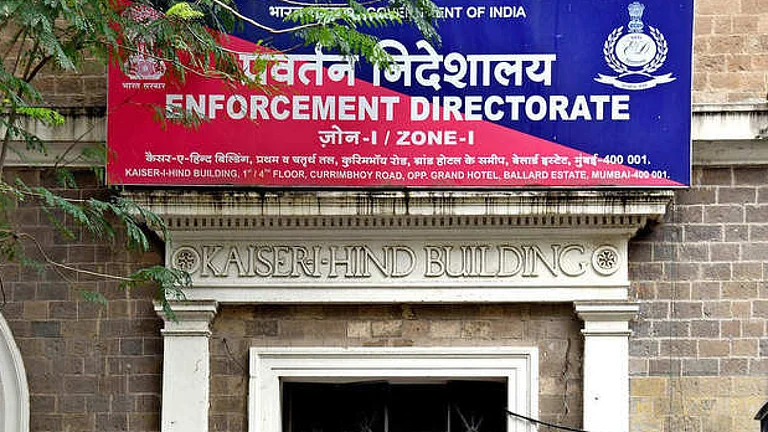No sooner RBI announces a cut in interest rates in its bi-monthly monetary policy reviews, there is a clamour amongst TV anchors, economists and industry leaders to seek the 'next' cut in the REPO rate, which has now been reduced to 5.40 per cent, the lowest in almost a decade. Without digesting the 110 basis points or 1.10 percentage points, reduction since January this year, high decibel narrative gets louder for severe slashing of the interest rates. Every time any of the indices relating to industrial growth, core sectors or broader GDP is released, the noise for even lower cost of borrowing gets louder. An impression is created as if all the economic problems begin and end with only interest rates. If that was the case, Japan, which has kept the lending rates in negative would have been the fastest growing economy of the world; but it has been battling slowdown and even recession for decades.
The narrative and the media coverage, is all about cut in interest rates to boost growth, instead of the resolution of the Monetary Policy Committee about the impact on depositors. And, not a single question is asked in the Governor's media interaction about the savers. They are taken for granted.
All the media discourse has been so well captured by borrowers, the largest being the government itself and big corporates, many of whom borrowed, without realising the debt has to be repaid. The result is humungous non-performing assets, which in several banks, are 17-18 per cent at gross levels, while the lenders are drummed up for ''hair cuts''. In plain and simple language the so-called ''hair cuts'' means that banks must do a debt-waiver or face a scary scene of further erosion of their toxic assets. In this entire discourse, depositors do not figure at all; their fate is decided by the RBI and the Finance Ministry which have to keep listening to the drum beats of more rate cuts.
Depositors are helpless because the much-touted alternative of mutual fund is becoming risky and showing meagre, if not negative returns, with only assurance that the investors must wait for 'long-term' without explaining what that means.
Maybe these long-term theorists need to be reminded about what John Maynard Keynes said about a century ago, "In the long run we are all dead".
Indian depositors combine a pack of savers from all the layers of economy. From a domestic help to middle class investors to high net worth individuals, they allwant to save for different goals - from marriage of daughter to sending boys and girls to institutions of higher learning to living on monthly interest income in the absence of a pension society. Depositors get an annual FD rate of 6-6.5 per cent. After 10 per cent TDS, a depositor would get Rs 5,400 per one lakh annually on a saving of Rs 1 lakh.
Every time, senior citizens make some feeble protests, they are reminded about 25-50 basis points paid extra to them. But every time, a deposit rate is cut, senior citizens too get lower returns.
How much is well-touted real interest rate? Well, it is the rate minus inflation. Let us see from the depositors' point of view.
The Rural-Urban combined inflation, based on the Consumer Price Index (CPI) is 3.18 per cent for June, 2019 while the FD rate is about 6.25 per cent. So, the real interest rate would be 3.07 per cent, considered to be amongst the highest in the world.
The catch lies in the average of different inflation indices, which do not protect depositors against the price rise. For instance, the 3.18 per cent CPI inflation is that of a combined basket of goods in rural and urban areas. But at the disaggregate level, it is a different picture: 4.33 per cent in urban centres, the major source of savings, reducing the real rate to 1.92 per cent.
Disaggregation at the commodity level is a further eye-opener. If you are saving for your daughter's marriage, you would need to buy gold. What is the price of jewellery in August, 2019 against the same month last year? The inflation for jewellery between August, 2018 and August, 2019 is well over 25 per cent while the pure play gold prices have gone up by about 23 per cent during this period -- from little over Rs 30,000 to Rs 37,250 per 10 grams.
So, the real interest rates (on the basis of financial goals would be hugely negative) same is true about several other categories like housing, education and cost of health. In so far as the prices of cereals, milk and sugar, fruits and vegetables are concerned, they are surely ruling low but then, they are highly seasonal in nature and may shoot up depending on variables like weather. Besides, depositors' key personal goals like marriage of sons and daughters, their education, housing and health must be protected against inflation.
There is a discentive on savings in bank deposits while the depositors run the risk of negative return in the risky markets, at least now. No wonder, the household savings rate has been declining. It dropped to 17.2 per cent in 2017-18 from 23.6 per cent in 2011-12, according to the data in Economic Survey of 2018-19.
The banking system needs both borrowers and depositors. There are role reversals as well at individual level, making it obligatory on the part of the regulators and policy makers to strike a balance in protecting both.
The author is a New Delhi based journalist






























